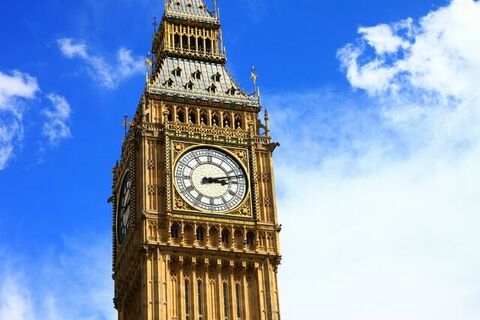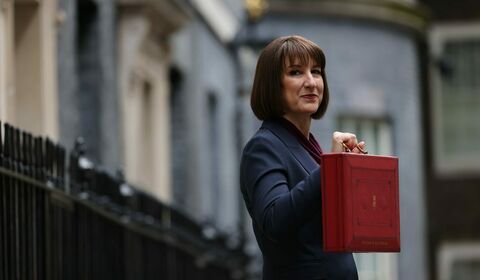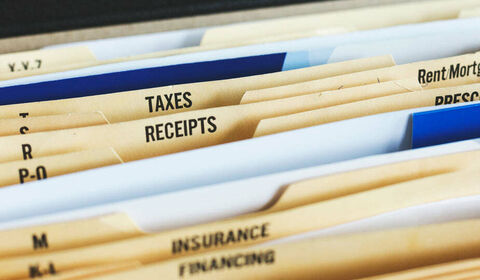What is VAT and how does it work?
Value Added Tax (VAT)- an Introduction
VAT-registered businesses act as unpaid tax collectors and are required to account promptly and accurately for all the Value Added Tax (VAT) they collect.
HMRC polices the VAT system with heavy penalties for breaches of the legislation. Ignorance is not an acceptable excuse for failing to comply with the rules.
This tax guide provides a basic introduction. We would be happy to provide any further clarification or advice you require.
Rates
Most purchases carry a VAT charge. VAT is levied on most business transactions and many goods and some services.
There are three rates of VAT in the UK:
- 20% (the 'standard' rate)
- 5% ('reduced' rate) and
- 0% ('zero' rate)
Outputs and Inputs
Businesses charge VAT on their sales. This is known as output VAT, and the sales are called outputs. Similarly, VAT will be payable on most goods and services the business purchases. This is known as input VAT.
The output VAT is being collected from the customer by the business on behalf of HMRC and must be regularly paid over to them. However, the input VAT suffered on most (but not all) goods and services purchased for the business can be deducted from the output tax owed to HMRC.
If your input tax exceeds your output tax, HMRC will owe you a refund.
Registration
You will probably have to register for VAT if any of the following apply:
- The taxable turnover of your business in the previous 12 months reaches the VAT registration limit (currently £90,000). However, you can also register voluntarily if your turnover is below this.
- You believe your turnover in the next thirty days will exceed the registration limit.
- You take over a business as a going concern whose turnover meets the conditions in the previous 2 points.
There are penalties for failing to register on time.
Goods and services liable to VAT are known as 'taxable supplies'. Once registered, you must charge VAT on all taxable supplies.
Exempt supplies
VAT doesn't apply to everything. Supplies that are specifically not subject to VAT are referred to as "exempt." This includes insurance, financial services, postal services, health, and education, although there are exceptions in every category.
Should you register?
If your taxable turnover is below £90,000 you don't have to register but you may be eligible to apply for 'voluntary registration'.
There can be advantages to registering such as:
- increased business credibility;
- potential savings if your supplies are zero rated but you can still reclaim VAT on your purchases;
- potential savings if you mainly supply other VAT registered businesses who don't mind being charged VAT and you can then still reclaim VAT on your purchases.
However, this does have to be weighed up against the hassle factor of completing VAT returns and paying the VAT due every quarter. If you supply the general public, you will probably not want to register, as this simply raises your prices by 20%.
Taxable person
A taxable person is anyone who makes or intends to make taxable supplies and must be registered. For the purpose of VAT registration, a person includes:
- an individual
- a partnership
- a company, a club and an association
- a charity.
Suppose any person carries on two or more businesses. In that case, all the supplies made in those businesses will be added together to determine whether or not the person is required to register for VAT.
VAT returns
Once registered, you must make a quarterly return to HMRC showing the amounts of output tax to be accounted for and of deductible input tax, together with other statistical information.
In most cases, each VAT return must be completed and filed electronically within one month of the end of the 3-month period it covers. Special rules apply to traders who use the Annual Accounting Scheme (see below).
Businesses which make zero rated supplies and who are entitled to receive repayments of VAT are allowed to submit monthly returns. This enables the business to secure more prompt refunds of input tax from HMRC.
Administration
Record keeping
In addition to the general requirement to maintain complete and up-to-date records for the taxman, special rules apply to VAT-registered businesses. Obviously, the records should identify all supplies, purchases and expenses. The business must also maintain a VAT account showing the output tax payable and input tax recoverable by the business. These records should be kept for at least six years.
Inspection of records
The registered person is responsible for maintaining records and calculating the liability, but HMRC will need to be able to check that the correct amount of VAT is being paid.
Therefore, a VAT officer will occasionally inspect the business records. The officer will want to ensure that VAT is applied correctly and that the returns and other VAT records are properly written.
However, you should not assume that in the absence of any errors being discovered, your business has been given a clean bill of health.
Offences and penalties
HMRC has wide powers to penalise businesses that ignore or incorrectly apply VAT regulations.
Penalties can be levied in respect of the following:
- late returns/payments
- late registration
- errors in returns.
Filing
Almost all VAT-registered traders are required to file VAT returns electronically using HMRC’s Making Tax Digital (MTD). This is facilitated by using accounting software that is MTD-compatible. There are some limited exceptions where traders cannot use computers, software, or the internet. Typically, this could be because of issues relating to age, disability, location, or religion.
Official VAT Schemes
Various official VAT schemes may be of interest, mainly for small businesses:
- Cash Accounting — If your taxable turnover is under £1,350,000 a year, you can account for VAT based on cash received and paid rather than the invoice date or time of supply.
- Annual Accounting - You can complete one VAT return per year rather than four if your turnover is under £1,350,000. You must also make nine payments on account throughout the year and a balancing payment with the VAT return.
- Flat Rate Scheme - This is for businesses with a turnover of under £150,000. It saves on administration as you pay a set percentage of your VAT-inclusive turnover based on your business sector rather than accounting for VAT on each individual "in and out". It can also reduce the VAT you pay in some situations. Identifying the right business sector to avoid problems down the line is important.
- Retail Schemes - These apply to retailers and offer an alternative if it's not practical to issue invoices for a large number of supplies directly to the public. You need to choose the right scheme for your situation.
Page updated on 13/05/2024.



